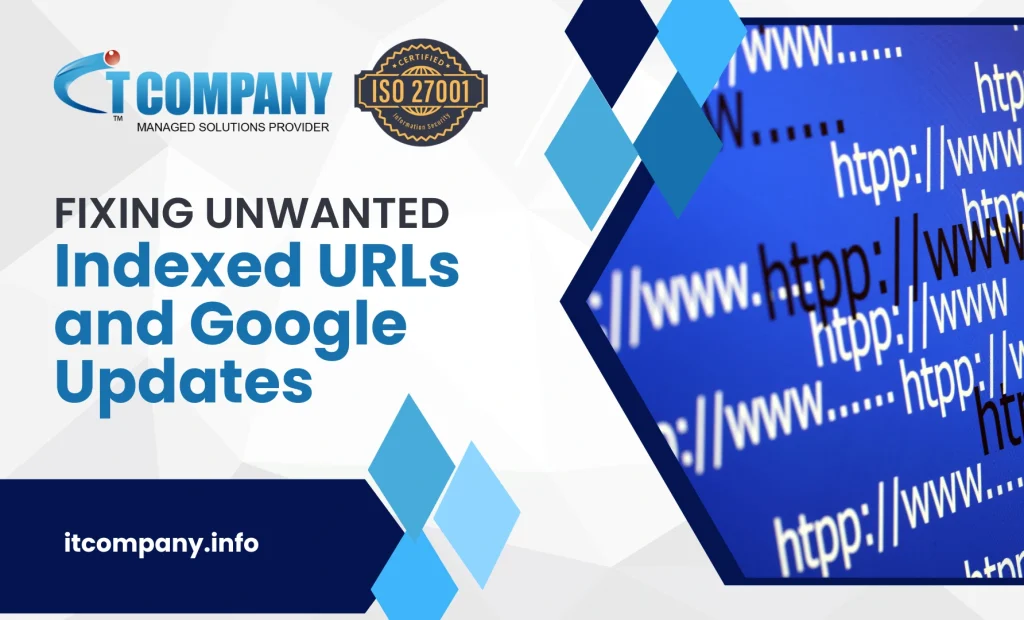
If you’re dealing with unwanted URL indexing in Google, you’re not alone. Many websites face this issue, especially when using dynamic URLs with query parameters, like ?add-to-cart. Google can crawl and index these URLs, even if you don’t want them to show up in search results.
The usual advice includes using rel=canonical, robots.txt, or noindex meta tags, but there are some unconventional methods that can work even better. Let me guide you through three of them.
Table of Contents
Toggle1. Use of JavaScript to Hide Unwanted URL Variants
While it’s generally known that Googlebot can crawl and index JavaScript-generated content, using JavaScript to dynamically remove or modify URL parameters before they are crawled can be a creative way to stop indexing unwanted URLs. By creating JavaScript that rewrites or hides certain parameters from search engines, you can effectively prevent the page from being indexed with unwanted query strings.
How this method works:
- Write JavaScript that dynamically strips query parameters (e.g.,
?add-to-cart=example) from the URL before the page is rendered to the user. - For example, the page will load the content without showing the
add-to-cartparameter, while still working for the user. The URL seen by search engines won’t contain any unnecessary query strings. - This can be a way to prevent Google from crawling non-canonical URLs. Without having to manually manage every possible URL variant through robots.txt or meta tags.
This approach can be effective if the website’s functionality allows for seamless URL manipulation via JavaScript. When combined with proper canonical tags, it can prevent duplicate content issues.
2. Use an HTTP Header (X-Robots-Tag) for Content Control
An underutilized method for controlling indexing is using the X-Robots-Tag in HTTP headers. Instead of relying on meta robots tags or rel=canonical links, the X-Robots-Tag allows you to control the indexing of content at a more granular level. Especially for non-HTML content such as PDFs, images, and dynamically generated pages.
How this method works:
- Add an HTTP header such as
X-Robots-Tag: noindex, nofollowto the response for specific pages or URL variants you want to block from indexing. - This approach is beneficial when you can’t modify the HTML of the page itself. ( if you’re working with dynamically generated pages or files).
- The X-Robots-Tag tells search engines not to index the page or follow the links on the page. Even if the page is technically accessible via a URL.
For instance, if you have certain dynamic pages like add-to-cart URLs or even product variants that you don’t want Googlebot to index, you can send the noindex directive at the server level without needing to rely on on-page meta tags or robots.txt.
3. Canonicalizing via Hreflang or Alternate Links for Multilingual or Multi-Regional Content
While hreflang tags are commonly used for multilingual or multi-regional websites to indicate content for specific language or regional audiences. You can also use hreflang in a lesser-known way to control which URLs get indexed. You can leverage hreflang to signal to Google which version of a URL to prioritize across multiple URL variants. And it creates a more controlled indexing environment.
How this method works:
- Use
hreflangtags to associate the primary version of the content with the canonical URL. - Even if you have paginated or filtered URLs (e.g.,
?add-to-cart=example), you can use hreflang links to clarify the intended geographic or linguistic audience. - For example, you can use hreflang tags to point to the canonical version of the product page. Which ensures that Google indexes it over a variant URL. This helps Google recognize that the page is part of a larger content set. And that it should be treated as a unified entity.
By using hreflang in this way, you help Google more effectively understand the structure of your content. It is beneficial as it avoids indexing multiple variations that would dilute the authority of a primary page.

Conclusive Remarks
These unconventional methods provide an extra layer of control over how your content is indexed. Especially when used alongside traditional methods like canonical tags, robots.txt, and noindex directives.While they may not be standard practices for every website, they can be helpful in specific cases where the usual solutions fall short or when dealing with complex, dynamic content.
Frequently Asked Questions
Certainly! Here are some FAQs related to the blog on fixing URL indexing issues in Google:
FAQs: Fixing URL Indexing Issues in Google
1. Why does Google index my unwanted URLs with query parameters like ?add-to-cart?
2. What is the best way to prevent Google from indexing URLs with query parameters?
X-Robots-Tag, and utilizing hreflang tags to point to canonical URLs are all effective ways to control which URLs Google indexes. These techniques allow you to avoid having unwanted URLs appear in search results.3. How does JavaScript help in preventing unwanted URL indexing?
?add-to-cart), you can ensure that Google indexes the clean, canonical version of the page instead of a version with unwanted parameters.4. Can I control URL indexing without modifying the HTML of my website?
X-Robots-Tag HTTP header, you can tell Google not to index certain URLs without changing the HTML. This is especially useful when dealing with files (like PDFs) or dynamically generated pages that you cannot easily modify.7. What should I do if Google keeps indexing my shopping cart or filter URLs?
add-to-cart using robots.txt, add noindex meta tags to those pages, or use HTTP headers to tell Google not to index them. Alternatively, you can use JavaScript to prevent the pages from indexing in the first place.8. Will blocking URLs with robots.txt stop Google from indexing them?
robots.txt prevents Googlebot from crawling those pages, but it doesn’t guarantee they won’t be indexed if they’re linked to from other pages. For a more reliable solution, use noindex tags or HTTP headers in conjunction with robots.txt.